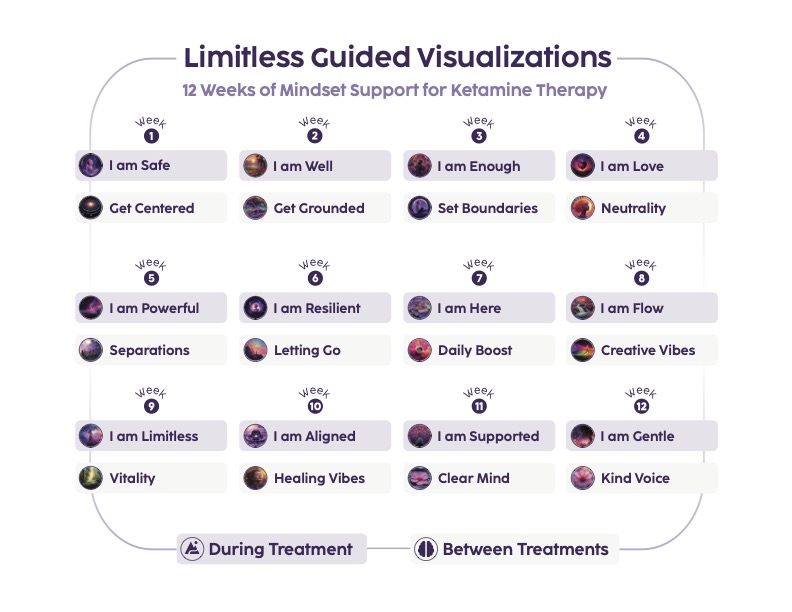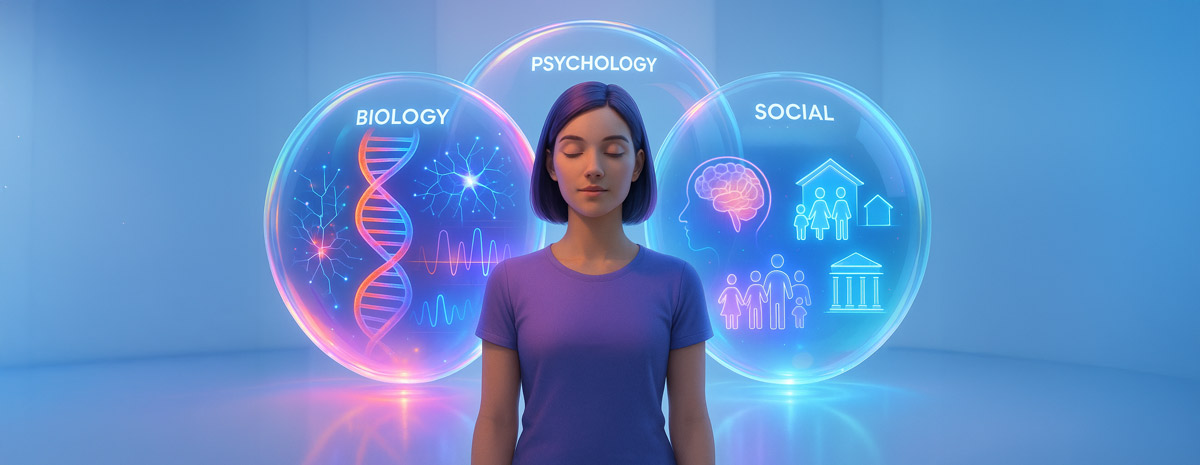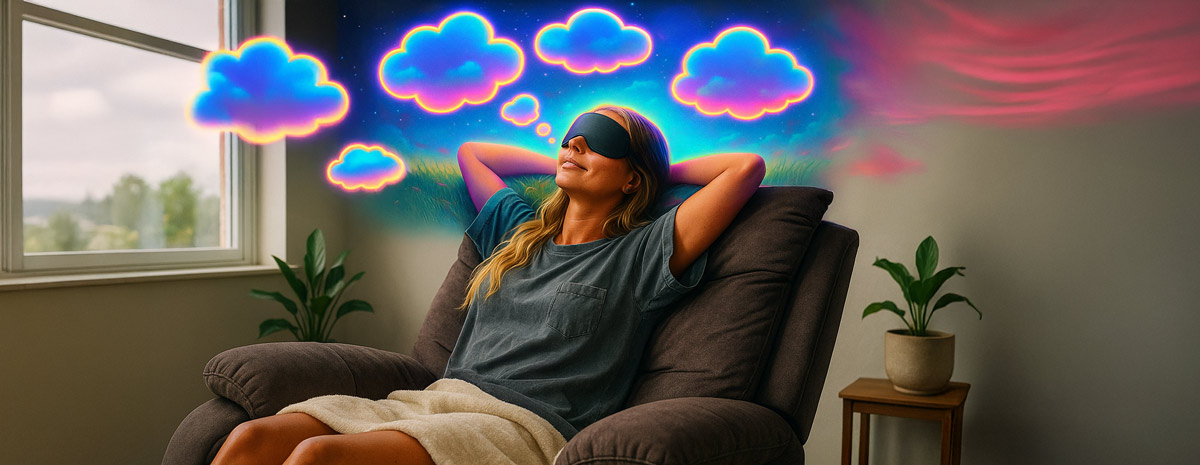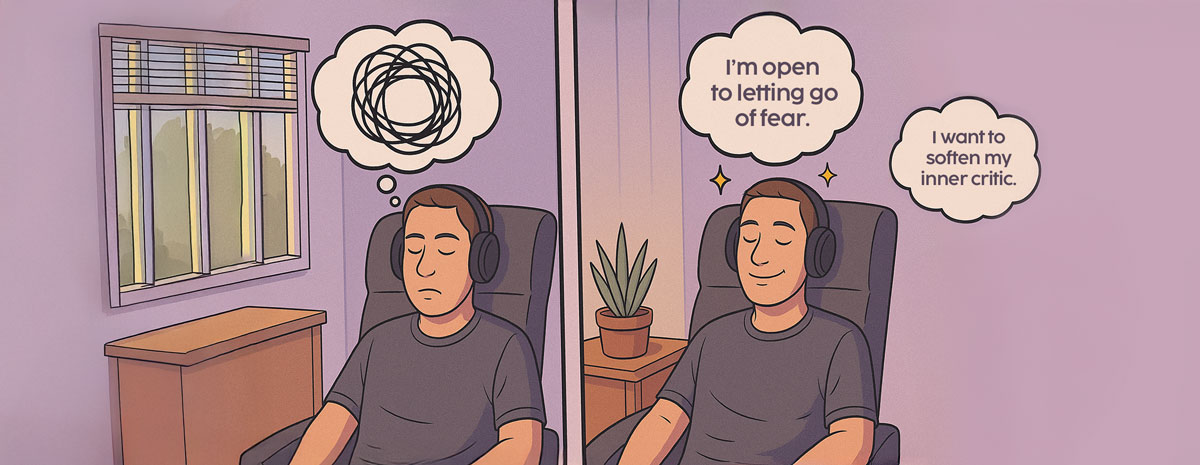How to Keep Ketamine Patients Engaged: Pair the Protocol with a Mindset Plan

Why Patients Disengage and What We Can Do About It
Ketamine therapy is powerful and disorienting. Patients often emerge from sessions unsure how to make sense of what they experienced. Without a clear framework for reflection, they may feel lost or skeptical about continuing.
Comments like these are common - without the right structure, they can turn into dropouts before the treatment arc is complete.
- "Was that supposed to happen?"
- "I saw things, but I don’t know what they mean."
- "I thought I’d feel better by now."
When clinicians pair a clinical protocol with a mindset plan, patients gain a mental anchor between sessions, often leading to stronger engagement and improved adherence.
What is a Mindset Plan?
A mindset plan is a structured yet flexible framework that guides patients through reflection, emotional processing, and integration alongside their clinical care.
Think of it as:
- A mental map that makes the dissociative terrain more navigable
- A tool for emotional preparedness and narrative formation
- A weekly touchpoint to support consistency and self-awareness
It’s not therapy. It’s not homework. It’s a scalable, low-lift process that gives patients a way to connect to their experience.
Why It Matters in Clinical Practice
Pairing a mindset plan with a ketamine protocol helps patients:
- Feel emotionally prepared before each session
- Reconnect to purpose and internal intention
- Reduce confusion around dissociation
- Build psychological continuity between sessions
Clinically, this leads to:
- Higher completion rates for loading doses
- More meaningful integration sessions
- Increased patient satisfaction and perceived efficacy
Research supports this approach: A review by Shaffer (2016) highlights how neuroplasticity-based behavioral strategies - especially those that foster emotional engagement, intention, and reflection - can increase adherence to clinical treatment plans and promote long-term cognitive and emotional resilience.
For more on creating psychological scaffolding, read our article on metacognition and ketamine therapy.
How Limitless Supports the Framework
Limitless provides:
- Pre-session intro tracks to cue intention setting
- These are pre-loaded into each Macrodose. Just press play.
- In-session Macrodoses that build emotional readiness and metacognitive skill
- Microdoses for daily grounding, narrative recall, and internal safety
Patients simply choose the guided visualization in the app aligned to the theme of the week (see the 12 week framework below), or follow the custom playlist recommended by their clinician.
To see what this looks like in action, schedule a discovery call with our team.
Explore Next Steps
Schedule a Discovery Call
See how Limitless can fit into your clinic’s workflow — helping patients engage more deeply in treatment, regulate their nervous systems, and sustain progress between sessions.
How to Introduce a 12-Week Mindset Framework
After a patient completes their first session, the 12-week framework can be presented as part of their take-home materials. This optional structure is designed to help patients stay mentally and emotionally engaged in their healing process between visits. It gives them access to tools that build on what they’ve already begun experiencing, while keeping the tone supportive and pressure-free.
When introducing the framework, consider saying something like:
“As part of your take-home materials, you’ll see a 12-week mindset support schedule. It’s completely optional, but many patients find it helpful to stay connected to the process between treatments.
Each week introduces a pair of guided visualizations, one to go deeper, one for quick daily support. They build on each other so we recommend to follow it in order but you can also just explore what speaks to you most.”
The goal is to plant a seed. Emphasize that the structure is intentional but flexible, and that even a few minutes of engagement each day can strengthen their nervous system regulation skills and support neuroplasticity over time.
Let the visual schedule guide them through the sequence, your role is simply to introduce it as a helpful companion, not a requirement.
If you'd like to offer additional support, beyond patient access to the app, you can provide patients access to our full program online. Our Mindset Matters platform is foundational to supporting patients with whole-person mindset care, designed to help them build cognitive adaptability, enhance emotional regulation, self-awareness, and long-term transformation.
Upgrade your clinic’s patient wrap-around services by offering access to patients who are ready to build on the success they are having in your clinic.

Frequently Asked Questions About Mindset Planning in Ketamine Therapy
Many benefit from having one. A structured mindset approach improves clarity, emotional regulation, and treatment readiness, especially for those new to dissociative, altered, or psychedelic states. It helps patients orient themselves to the experience and make meaning from it.
Keep it simple and integrated. Present it as part of the overall support system:
“Alongside your sessions, we offer a 12-week mindset plan to help your mind stay grounded and engaged in the process.”
No. Mindset support is a non-clinical, complementary tool - not a replacement for therapy. It’s designed to enhance the therapeutic environment, not to perform psychotherapy itself.
Some patients may still benefit from the treatment, but without mindset support, the insights can remain fragmented or harder to integrate. It may increase confusion, anxiety, or emotional discomfort, especially for those unfamiliar with non-ordinary altered states of consciousness. Mindset tools help bridge those experiences into lasting change.
The structure is flexible. Missing a week doesn’t undo progress. Encourage them to continue from where they left off or revisit what feels most relevant.
That’s okay. Let it be an invitation, not a requirement. You can gently let them know that mindset support has been shown to improve outcomes - then offer options that match their comfort level.
“There’s some good research showing that mindset practices like guided imagery can really help people get more out of their treatment. Even just having something gentle to listen to can make a difference.”
If they’re not ready to listen to someone’s voice, Chill Music can be a great entry point that still offers support without being too activating.
“If a voice feels like too much today, just try the music. It’s calming, and it can help your mind stay grounded while you go through the experience.”
Let mindset support remain a gentle offering, not something they’re being pushed to do.
Absolutely. The structure is suggested, but flexible. Themes can be adjusted based on the patient’s needs. The visualizations are versatile across many clinical scenarios.
Final Thoughts
Give the Mind Something to Follow
Ketamine therapy opens a window; but what flows through it depends on what the patient brings to the experience. A simple, thoughtful mindset plan gives patients a psychological infrastructure to feel supported, oriented, and resilient.
By pairing a clinical protocol with a mindset framework, you’re not just administering treatment; you’re supporting the whole person. That’s where real transformation happens.
Want to offer Limitless Guided VIsualizations app at your clinic?
Purchase patient access licenses or schedule a discovery call with our team.
How To Integrate Limitless App Into Your Practice
Whether you're exploring mindset support for the first time or ready to roll it out across your treatment rooms, we’ve made it simple to begin. Each kit is designed to help your team introduce Limitless with ease.
Kit
1-Month License
for Patients
for Patients









